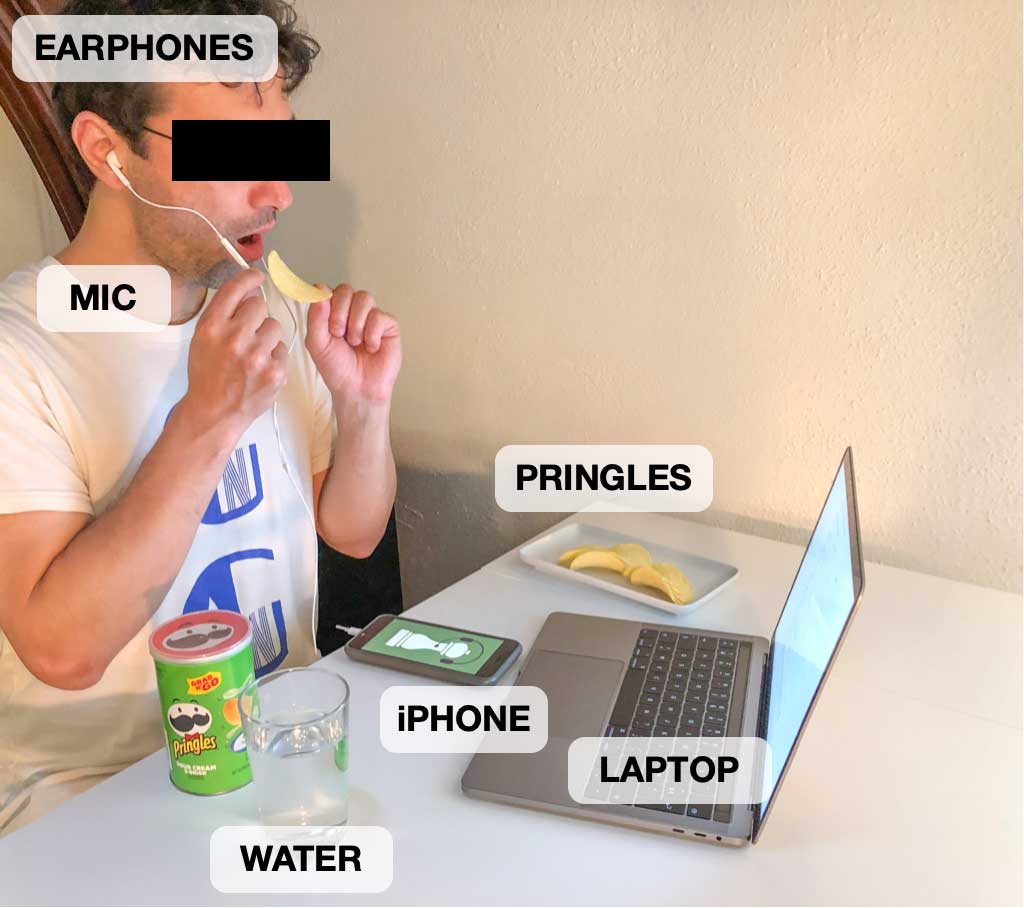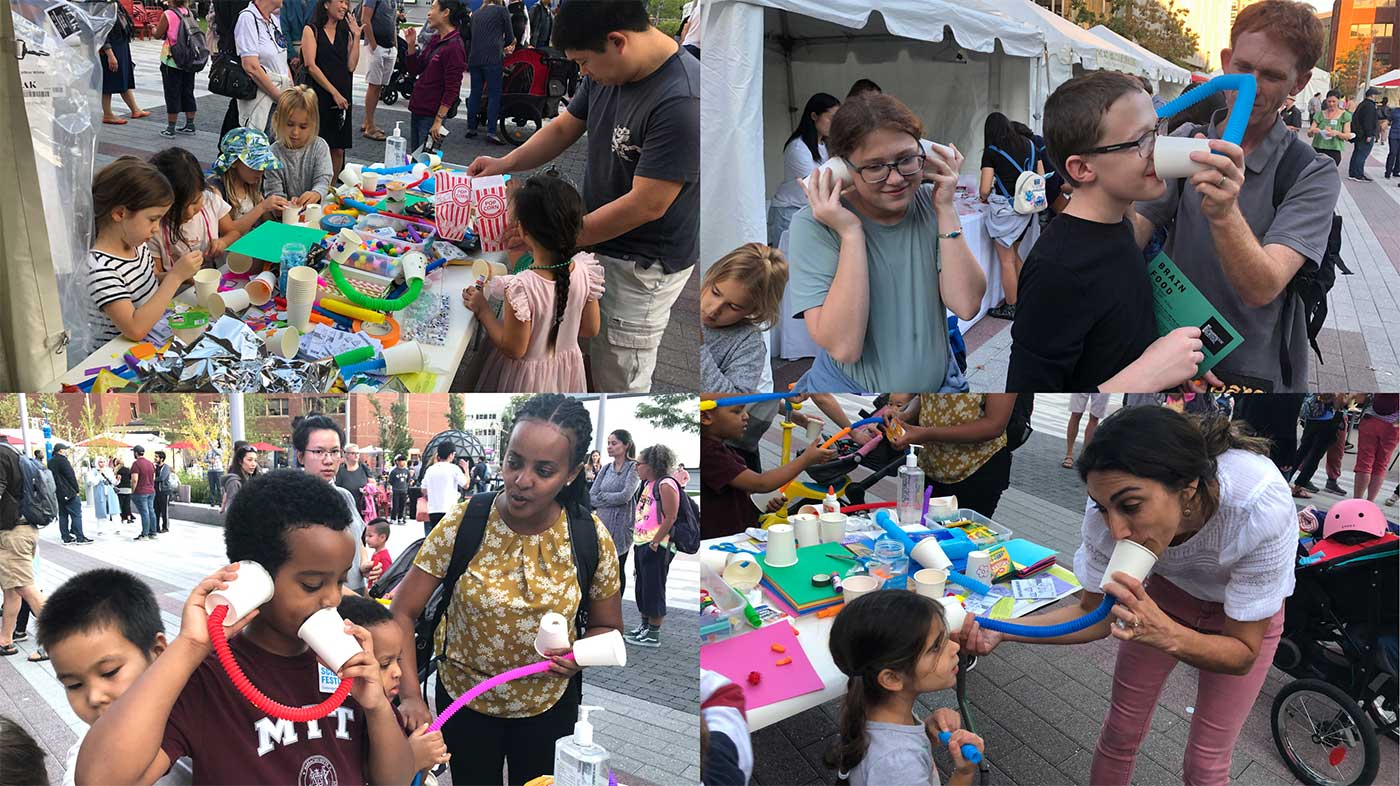What Pringles and audio filters can teach us about our brains
Author: Milton Posner
Date: 04.20.23

This month, researchers will gather in Hamburg, Germany for CHI, the world’s top conference in the field of human–computer interaction. And nested within a mountain of research spanning everything from high-tech robotics to futuristic AI to connective social computing, there lies a study with something very different at its core: Pringles.
These chips are uniquely useful experimental stimuli for food-tech research, as their uniform size, texture, and flavor allows researchers to create consistent food samples and investigate how environmental conditions affect the eating experience. In a new study co-led by Rébecca Kleinberger, a jointly appointed professor within Khoury College and the Department of Music in the College of Arts, Media and Design, the team used the popular snack to test how auditory senses impact people’s perception of their food. The researchers gave Pringles to study subjects and modulated the sound of their chewing, then observed how each audio filter altered the subjects’ perceptions of both the food and their own hunger.
“Existing studies showed that when you eat chips while filtering out high and low frequencies, it changes your perception, and you’d feel like the chips are more crunchy or stale,” Kleinberger explains. “We were interested in going beyond texture to also investigate perceptions of flavor, saltiness, and fullness.”
The team’s makeup underlined its cross-disciplinary intent. Kleinberger brought her background in voice perception study and modulated auditory feedback, which she had used to boost the vocal fluency of people who stutter, among other things. She partnered with Akito van Troyer, a Berklee School of Music professor specializing in sound effects and packaging them into apps, and with Qian Janice Wang, an expert on multimodal food perception based at the University of Copenhagen. Their study, which sat at the nexus of these areas, aimed to build on previous studies that separated auditory stimuli from eating to gauge how each affected the other.
“We needed something consistent from trial to trial and from participant to participant, and Pringles are manufactured identically,” Kleinberger says, noting that they used the sour cream and onion flavor to aid analysis of sourness. “They’re also small enough to eat in one go.”

Existing research has established that senses aside from taste — including sight, smell, and texture — can alter the way we perceive taste and fullness. So as the study’s 37 participants snacked away, the team funneled the chewing sounds back to them through headphones, each time tweaking a different audio filter: volume tweaks, delays, reverbs, and high- and low-pass filters.
“When you add reverb or delay in music, you can find a plug-in, add some parameters, and see how it sounds,” Kleinberger notes. “But with this kind of application, you have to be precise with the signal processing pipeline used on each audio mode. Really subtle things can affect the brain.”
The team’s findings back that up. When the chewing sounds were amplified, participants reported greater sensations of satiety, texture, and flavor, including saltiness and sourness. Large-room reverb diminished sourness and cravings. Filtering of high and low frequencies each bolstered fullness, suggesting a relationship between fullness and attentiveness to the food. Delay didn’t affect texture or flavor, but it appeared to slow down eating speed.
“This technology is quite fun and it helps you understand what’s going on in your brain, but is there a way to apply it and make an impact, especially regarding foods that aren’t especially healthy for you?” Kleinberger muses. “Can we make you eat slower? Can we make you chew more? Can we make you perceive more flavor and saltiness even if there’s actually less, so you’d eat food with less salt and artificial flavor?”
To that end, the team believes the next step is to package these audio filters into digital tools that help users regulate their cravings and food perception in real time. While dietary solutions are far from new in the human–computer interaction field, existing methods often require external hardware for the users (including VR goggles or custom-made electronics) as well as sophisticated machinery to specially prepare foods. Kleinberger and her colleagues envision an easy-to-deploy app that produces the same effects across different devices, one that users can employ in real time without the need for invasive devices or explicit self-regulation.
Based on this underlying principle of transforming chewing sounds to increase food awareness, the team also led a workshop for children with the help of the MIT Media Lab’s Public Library Innovation Exchange, which develops science-based learning opportunities based on the lab’s research. Using craft and other low-tech materials, over 300 participants “ate with their ears” to help encourage healthy, attentive eating.

Apart from the intricacies of the sound effects and neurology at play, Kleinberger believes that an underlying question of perspective is among the study’s biggest takeaways.
“All of our study participants, young and old, told us they’d never had an experience like this, that it was really fun and transformative. It made us think that maybe none of them had occasion to stop and think about their eating this way,” Kleinberger says. Just the notion of gaining awareness of your chewing, of becoming more attuned to it and having this stronger experience of sound, can make people eat more mindfully. That was something people really enjoyed through the study, and some people told us months later that, since the study, they don’t eat chips the same way anymore. They seem to have become more aware of chewing sounds and the overall eating experience in what seems to be a lasting way. It truly transformed the experience, which we loved to hear.”
Subscribe to Khoury News
The Khoury Network: Be in the know
Subscribe now to our monthly newsletter for the latest stories and achievements of our students and faculty